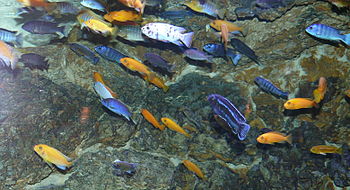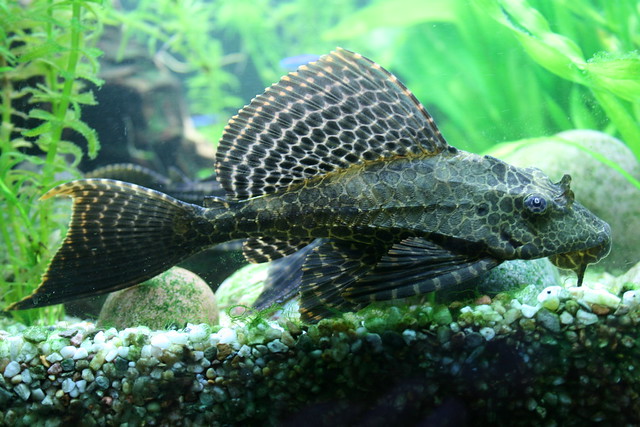When my son was small, one of the angelfish that lived in his aquarium suddenly became covered in what looked like a white film and after a few days, his fins started becoming damaged. After a few more days, the fish died and others started getting the same condition. It was not long before the aquarium had no fish in it and his fish keeping days were over.
 |
| A velvet infected fish. Clearly visible on head. (Photo credit: Wikipedia) |
At the time, we did not know what disease the fish had. I learned much later that it was probably a contagious and usually fatal disease called Columnaris. I did not investigate at the time, after all, they were goldfish and could have been easily replaced. But, what if it had been a koi pond or a much larger aquarium stocked with more valuable fish such as the aquarium my son-in-law has or the koi pond that is in our neighborhood. The end result would have been the same, but the loss would have seemed devastating. The possibility does raise the question "How do I know if my fish are sick?" for every fish keeper.
There are many fish diseases and all of them require medication, care and attention to cure. Most fish diseases are brought from outside sources when new fish are introduced into the aquarium. Many are caused by bacteria, parasites or fungus that thrive on poor quality water and a poor diet can contribute by decreasing the fish immune system. The easiest way to keep your fish healthy is to prevent disease in the first place. And good quality water and a proper diet are essential to preventing fish disease.
Realizing that there may be a problem in your aquarium is the first thing. But how do you know what the problem might be and how to treat it?
Every fish owner knows how his fish are supposed to act and will usually notice any unusual behavior or conditions. Unusual behavior, such as rubbing against rocks or gasping at the surface could be indicators of disease. Unusual conditions like small spots or patches on the fish are sometimes the first indicator of problems in the aquarium. If you suspect a fish is sick, get it out of the water and into a quarantine pool as soon as possible. Quarantine is necessary if you want to try to keep your other fish from getting sick. It is a good idea to keep a record of symptoms and your actions to treat the fish.
Somewhere in your fish keeping references, there should be a list of disease symptoms and treatments. Simple things, like fuzzy patches on the fish or around the mouth, a bloated appearance, or maybe, just losing weight. The list of symptoms is extensive, but the important this is that if you see something different about your fish, investigate.
The second issue is treating the disease to make the fish healthy again. There seem to be about as many drugs and disease treatments for fish as there are for humans. Most people do have a fish doctor in their list of contacts and a lot of the time you are on your own when treating a sick fish. Fortunately, there is a lot of free information available on the internet. And a lot of drugs used to treat the fish disease are available at most stores that sell fish.
Your references should include a list of diseases (with pictures) and possible treatments. I created a spreadsheet with information gleaned from a lot of different sources as a handy reference to help identify the symptoms.
Keeping koi fish is one of the most relaxing hobbies anyone can have. But like other ornamental fish, koi are susceptible to a wide range of fish diseases that can spread rapidly. Learning how to recognize the symptoms and how to take care of sick fish is essential to having healthy, vibrant fish. Click here and go to howtokeepkoi.com for more information on fish diseases. Article Source: EzineArticles |







